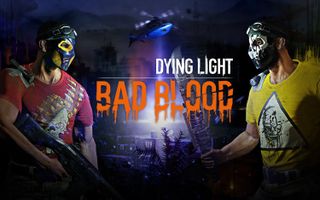Dying Light: Bad Blood Puts a New Spin on Battle Royale
Dying Light: Bad Blood pits you against other players as you vie to be the last man standing, but in a small, focused way.
SAN FRANCISCO — Between PlayerUnknown’s Battlegrounds and Fortnite Battle Royale, there’s no shortage of ways to get dropped into a battlefield and duke it out with 99 other players to see who comes out alive. On the other hand, if you’d prefer to tangle with computer-controlled foes while you bide your time, waiting for the perfect moment to strike, Dying Light: Bad Blood may be able to help. This multiplayer spinoff from the popular zombie open-world game pits you against other players as you vie to be the last man standing, but in a small, focused way.

I went hands-on with Dying Light: Bad Blood at GDC 2018, and my timid “I don’t play many competitive games” attitude quickly gave way to “taste my crowbar.” In Bad Blood, eight players compete against one another to collect blood samples from enormous zombie bosses. Collect enough samples, and you get to leave in a helicopter — assuming other players don’t steal them from you while you wait for extraction.
MORE: Best Gaming Mice
There are two factors that set Bad Blood apart from most battle royale-style games. The first is that there are only eight players, rather than 100. Games take about 10 minutes rather than 30, and you don’t have the luxury of waiting around for other players to kill each other. The second is that you’ll need to fight against AI opponents in addition to real players.
I played through two matches of Bad Blood, and very nearly escaped both times. Here’s how an average match plays out: You start at a randomized location on the map, with a small cache of supplies nearby. Perhaps you’ll get some improvised grenades, or a survival knife, or a medkit, or a crowbar. The important thing is that you’ll have just enough gear to start hunting zombies.
Killing run-of-the-mill zombies doesn’t really do you any good, but you can find “hives” that house much bigger undead bosses. These hulking brutes have a variety of skills, from spitting acid to rushing you and knocking you down with each blow. Generally speaking, though, you can take them out through a combination of smart weapon use and parkour platforming. When you defeat one, you’ll level up, increasing your strength and health. You’ll also get a handful of blood samples that you need in order to escape.
While you’re not likely to encounter other players straight away, they start showing up about halfway through a match, after you’ve exhausted the first hive or two that’s closest to you. This is where the game starts getting interesting: Do you avoid them? Try to take them on? Ambush them while they’re fighting a zombie boss? Sitting and waiting isn’t an option, since other players are constantly leveling up, and a first-level player won’t stand much of a chance against a fifth-level one. By killing another player, you could steal their blood samples, but it’s not easy to tell whether that player is stronger than you — or if they’ve even collected any samples at all.
Matches in Bad Blood come to a head when one player gathers enough samples to summon the evacuation helicopter. Any player who hasn’t succumbed to the zombie hordes (or another player’s sledgehammer) makes his or her way to the map’s highest point, where the real fun begins. Seeing three or more players duke it out is a treat, but what’s more likely is that players arrive asynchronously, and fight a series of one-on-one duels. I was twice able to ambush other players with grenades — and while I stood around admiring my handiwork, another player planted an ax in my back. I can’t say that I didn’t have it coming.
Dying Light: Bad Blood may not appeal to battle royale players who love the sheer scope of the genre, but for those who wished the experience was a little shorter and more focused, it gets the job done nicely. The expansion will roll out later this year, although interested players can sign up now for a potential spot in the beta.
Sign up to get the BEST of Tom’s Guide direct to your inbox.
Upgrade your life with a daily dose of the biggest tech news, lifestyle hacks and our curated analysis. Be the first to know about cutting-edge gadgets and the hottest deals.
Marshall Honorof is a senior editor for Tom's Guide, overseeing the site's coverage of gaming hardware and software. He comes from a science writing background, having studied paleomammalogy, biological anthropology, and the history of science and technology. After hours, you can find him practicing taekwondo or doing deep dives on classic sci-fi.

